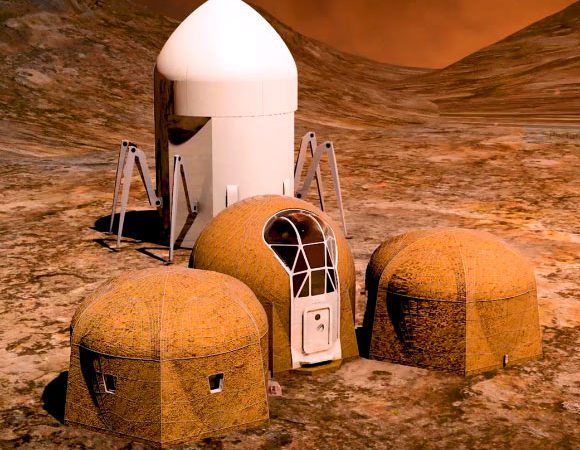Future missions to Mars and beyond will require innovative options to shelter explorers. NASA’s 3D-Printed Habitat Challenge, a Centennial Challenges competition, seeks ways to create or develop the technologies needed to create such habitats on-site, and challenges citizen inventors to lead the way. Now a panel of experts from NASA, academia and industry has selected the top five teams to share a $100,000 prize in the Phase 3: Level 1 of the competition.
NASA and its partners are holding a $2.5 million competition to build a 3D printed habitat for deep space exploration, including the agency’s journey to Mars.
The multi-phase contest is designed to advance the construction technology needed to create sustainable housing solutions for Earth and beyond.
The challenge, which began in 2014, is structured in phases:
– Phase 1: the Design Competition, required teams to submit architectural renderings and was completed in 2015;
– Phase 2: the Structural Member Competition, focused on material technologies, requiring teams to create structural components; it was completed in 2017;
– Phase 3 (current): the On-Site Habitat Competition, challenges competitors to fabricate sub-scale habitats, and has five levels of competition-three construction levels and two virtual levels; for the virtual levels, teams must use Building Information Modeling software to design a habitat that combines allowances for both the structure and systems it must contain; the construction levels challenge the teams to autonomously 3D-print elements of the habitat, culminating with a one-third-scale printed habitat for the final level.
“We are encouraging a wide range of people to come up with innovative designs for how they envision a habitat on Mars,” said Dr. Lex Akers, dean of the Caterpillar College of Engineering and Technology at Bradley University, NASA’s partner in the challenge.
“The virtual levels allow teams from high schools, universities and businesses that might not have access to large 3D printers to still be a part of the competition because they can team up with those who do have access to such machinery for the final level of the competition.”
In the first stage of the Phase 3, the judges interviewed and evaluated submissions from 18 teams from all over the world and selected these teams: Team Zopherus of Rogers, Arkansas ($20,957.95); AI SpaceFactory of New York ($20,957.24); Kahn-Yates of Jackson, Mississippi ($20,622.74); SEArch+/Apis Cor of New York ($19,580.97); Northwestern University of Evanston, Illinois ($17,881.10).
“We are thrilled to see the success of this diverse group of teams that have approached this competition in their own unique styles,” said Dr. Monsi Roman, program manager for NASA’s Centennial Challenges.
“They are not just designing structures, they are designing habitats that will allow our space explorers to live and work on other planets.”
“We are excited to see their designs come to life as the competition moves forward.”

































Leave a Comment
You must be logged in to post a comment.